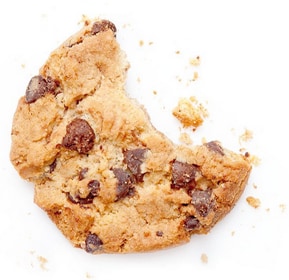
MRA Cases
Optimizing MRA
With its combination of high relaxivity and high concentration, together with a sharp bolus geometry and the flexibility to adapt dosing based on patient body weight, Gadovist® is able to add excellent image quality.1,2,3,4,5*
This facilitates a high diagnostic efficacy,6 which in turn can lead to more effective treatment, to optimize the patient outcome.
*Some data is based on an in vivo study, clinical consequences are not known.
Abdominal MRA
Two-In-One Imaging
Gadovist® facilitates the acquisition of small abdominal vessels (MRA) and organ parenchyma (MRI) within the same examination.
Combining the two procedures into one reduces the amount of contrast agent needed in scans – making the process more efficient for your practice and more comfortable for your patients7.


Supra-Aortic MRA
High Quality Static and Dynamic Imaging
By achieving both a high SNR and CNR, Gadovist® can deliver excellent image quality.
In an intraindividual comparison in 20 healthy volunteers, Gadovist® shows higher SNR at the level of the proximal internal carotid artery (ICA) than 0.5-molar macrocyclic gadoterate meglumine (p < 0.05).8
MRA vs DSA
The Less Invasive Alternative
Still Digital Subtraction Angiography (DSA) is the gold standard for therapeutic and surgical planning in patients with vessel pathologies. However, the method is invasive and not free of risks.9,10
Gadovist®-enhanced 4D-MRA is an excellent, non-invasive alternative for cerebral arteriovenous malformations (AVMs), peripheral arterial occlusive disease, and for the visualization of the carotid arteries.9-12 In addition, Gadovist®-enhanced renal MRA, can also be used to detect hemodynamically significant renal artery stenosis with sufficient sensitivity and specificity.10

References
- 1. Szomolanyi, Pavol, et al. "Comparison of the relaxivities of macrocyclic gadolinium-based contrast agents in human plasma at 1.5, 3, and 7 T, and blood at 3 T." Investigative Radiology 54.9 (2019): 559. Return to content
- 2. Shen, Yaqi, et al. "T1 relaxivities of gadolinium-based magnetic resonance contrast agents in human whole blood at 1.5, 3, and 7 T." Investigative Radiology 50.5 (2015): 330-338. Return to content
- 3. Rohrer, Martin, et al. "Comparison of magnetic properties of MRI contrast media solutions at different magnetic field strengths." Investigative Radiology 40.11 (2005): 715-724. Return to content
- 4. Tombach, Bernd, et al. "Comparison of 1.0 M gadobutrol and 0.5 M gadopentate dimeglumine-enhanced MRI in 471 patients with known or suspected renal lesions: results of a multicenter, single-blind, interindividual, randomized clinical phase III trial." European Radiology 18.11 (2008): 2610-2619. Return to content
- 5. Tombach, Bernd, and Walter Heindel. "Value of 1.0-M gadolinium chelates: review of preclinical and clinical data on gadobutrol." European Radiology 12.6 (2002): 1550-1556. Return to content
- 6. Gutierrez, Juan E., et al. "Safety and efficacy of gadobutrol for contrast-enhanced magnetic resonance imaging of the central nervous system: results from a multicenter, double-blind, randomized, comparator study." Magnetic Resonance Insights 8 (2015): MRI-S19794. Return to content
- 7. Liu, X et al. “Improved display of abdominal contrast-enhanced MRA using gadobutrol: comparison with Gd-DTPA.“ Clin Radiol. 74.12. (2019): 978.e1-978.e7. Return to content
- 8. Kramer, Jens Harald, et al. "Dynamic and static magnetic resonance angiography of the supra-aortic vessels at 3.0 T: intraindividual comparison of gadobutrol, gadobenate dimeglumine, and gadoterate meglumine at equimolar dose." Investigative Radiology 48.3 (2013): 121-128. Return to content
- 9. Hadizadeh, D. R., et al. "Noninvasive evaluation of cerebral arteriovenous malformations by 4D-MRA for preoperative planning and postoperative follow-up in 56 patients: comparison with DSA and intraoperative findings." American journal of neuroradiology 33.6 (2012): 1095-1101. Return to content
- 10. Kukuk, Guido M., et al. "Cerebral arteriovenous malformations at 3.0 T: intraindividual comparative study of 4D-MRA in combination with selective arterial spin labeling and digital subtraction angiography." Investigative Radiology 45.3 (2010): 126-132. Return to content
- 11. Burbelko, Mykhaylo, et al. "Comparison of contrast‐enhanced multi‐station MR angiography and digital subtraction angiography of the lower extremity arterial disease." Journal of magnetic resonance imaging 37.6 (2013): 1427-1435. Return to content
- 12. Budjan, Johannes, et al. "Diffusion kurtosis imaging of the liver at 3 Tesla: in vivo comparison to standard diffusion-weighted imaging." Acta Radiologica 59.1 (2018): 18-25. Return to content






